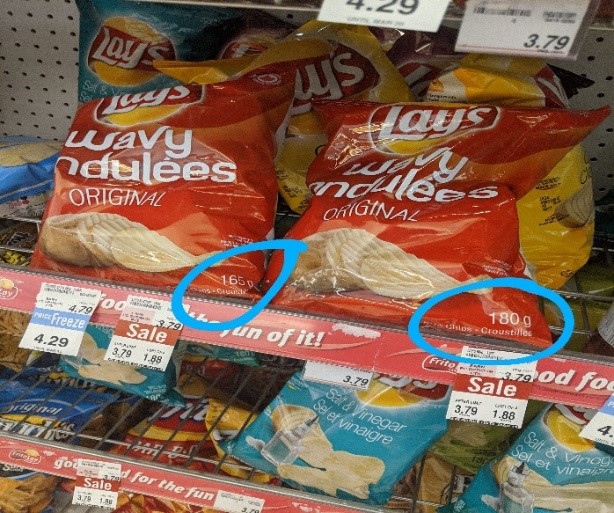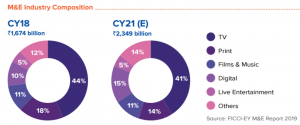INTRODUCTION
You must have seen products being priced as Rs.999 rather than Rs.1000, though there is just a difference of Rs.1, the former one is preferred more and has been a successful marketing strategy. Let’s find what’s behind this strategy.
What goes through the mind while making a purchase of a product which uses this strategy?
a) First round to the closest rounded values and judge the quality of the product.
b) Second to quantitatively assume the incentive of getting a product of higher quality at a lower price.
Psychologically the incentive felt while pricing 999 instead of 1000 is much
higher than that of pricing 998 instead of 999, so in a way we can say that the value of ₹1 is different in different situations.
There is one more strategy that has been in the trend since a long time, i.e., offering a 10 or 20% extra quantity for a similar price as before.
This strategy works on rational person only if he/she has a reference to compare with. For e.g., if you go to the store and see two products A and B having the same price but different quantities.
PSYCHOLOGICAL ANALYSIS OF HUMAN BRAIN

Psychological analysis is a clever marketing strategy adopted all over the world.
Is 999 smaller than 1000? Obviously yes.
But it looks much smaller to the subconscious mind. 1000 is a 4digit number and 999 is a 3digit number, so subconsciously our mind decides that 999 or 899 or 799 is a similar group but 999 and 1100 aren’t. Thus, a smaller number of digits in price tag gives impression of cheaper product.
THE BLACK MONEY – DISADVANTAGE OF THIS PRICE TAGS

We all often visit showrooms. Let’s imagine we purchase an item worth ₹999.
So, it’s quite genuine that we don’t ask for ₹1 change in the name of our status symbol.
This same ₹1 when collected in bulk, results in increasing black money in our country. It may sound like contribution of ₹1 will be insignificant when we are
talking about the whole country.
But let’s make it clear from an example.
Suppose a company has 250 retail outlets in INDIA. Daily if 100 customers will drop their ₹1 then the company will make ₹ 250*100*30 i.e. ₹7,50,000 per month. Means unknowingly we are adding a good amount to black market.
DIFFERENCE IN TAXES

By pricing the products Rs.999 over Rs.1000 has one major benefit to the business as the new GST rules are different for different price ranges.
For instance, Garments costing less than Rs. 1000 will attract 5% of GST whereas if the price exceeds Rs.1000 (including 1000) it attracts 12% of GST. Hence directly a margin of 7% is created.
Hence if the price is Rs.999 rather than 1000 the buyer has to pay less amount of GST, and obviously this makes this marketing scheme very efficient, as no one wishes to spend more money on taxes.
PSYCHOLOGICAL PRICING

As we all know the brain has two zones normally, one for feeling and emotional and another is for analysing and aptitude stuff. Basically this 999 and 1000 concept is just a mind game, we think that 999 is coming in 900 range so it’s cheaper than 1000 but we know that the only difference is 1 RS in this.
So, what is the reason behind this? Why our brain got tricked by this simple marketing strategy?
The main reason is that our brain reads from left to right, the first digit of the price resonates with us the most and it creates an optical illusion of getting something in the lower number series, say when it is written 999, it psychologically gives an effect that we have purchased something in the range of 900 something. But we know very well that this 900-1000 or 99-100 is not varying vastly, the only difference is 1Rs and this difference creates a vast impact on data processing that happens in our brain. And because of these, people don’t bother to pay 1Rs extra to the shopkeeper while buying something because for them at that moment ,1 Rs is nothing in front of 1000 or 900.
(Fun Fact: The numbers ending with 9 are also called “charm numbers” or “magic numbers”)
SHRINKFLATION

Shrinkflation is the process of items shrinking in size or quantity, or even sometimes reformulating or reducing quality, while their prices remain the same or increase.
Most consumers do not generally check the size of a product. Someone who loves potato chips, for instance, may not realize if his or her favourite brand reduces the size of the bag by 5%, yet will almost certainly be able to tell if the price goes up by the same amount.
The combination of shrinkflation and giving extra 10% is an effective marketing strategy.
E.g., Chips of 10 Rs weigh 25gm. Decreasing its size to 20gm and giving 10% extra is an effective marketing tac-tics. Overall, the product weight decreased to 22gm but nobody observed it as they think it’s giving an extra 10% so weight must be increased.
MAGGI – THE RISE AND FALL IN PRICES
The Nestle’s flagship product Maggi, a very popular instant noodles in India, the price of a small packet of Maggi was Rs.10, but at some point, of time the price was increased to Rs.12 resulting into decrease in the demand and less sales, as most of the people didn’t like to pay the odd Rs.2 as well, leading the company to reduces its price from 12 to 10 again but by reducing the net weight of the product, resulting into again gaining those lost footfalls.
Although the price remained to 10, but effectively the price of the product was increased as now the weight was reduced by almost 30gms but, then also people didn’t care much about it as compared to the increase in the MRP. And now many products are using the same strategy of maintaining the MRP, but on the cost of quantity and quality as well.
Although, both the above-mentioned marketing strategies are successful and are used widely. But, the effect of reducing from 1000 to 999 is much more than increasing the price from 1000 to 1001, and giving extra 10% quantity, this also comes in accordance with the prospect theory put forward by Daniel Kahneman and Tversky that the effect of a loss of the same magnitude is higher psychologically.
(Daniel Kahneman and Tversky: Nobel 2002 in economics and psychology)






